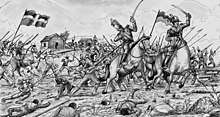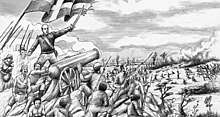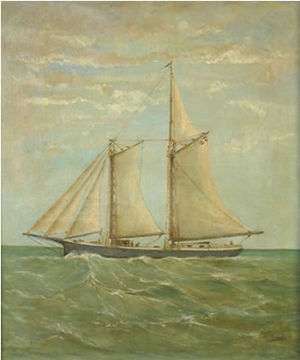Dominican War of Independence
The Dominican Independence War gave the Dominican Republic autonomy from Haiti on February 27, 1844. Before the war, the island of Hispaniola had been united under the Haitian government for a period of 22 years when the newly independent nation, previously known as the Captaincy General of Santo Domingo, was unified with Haiti in 1822. The criollo class within the country overthrew the Spanish crown in 1821 before unifying with Haiti a year later.
After ousting the Haitian occupying force from the country, Dominican nationalists had to fight against a series of attempted invasions from 1844 to 1856. Haitian soldiers would make incessant attacks to try to regain control of the territory, but these efforts were to no avail as the Dominicans would go on to win every battle henceforth.
Background
At the beginning of the 1800s, the colony of Santo Domingo, which had once been the headquarters of Spanish power in the New World, was in its worst decline. Spain during this time was embroiled in the Peninsular War in Europe, and other various wars to maintain control of the Americas. With Spain's resources spread among its global interest, Santo Domingo and other Caribbean territories became neglected. This period is referred to as the España Boba era.
The population of the Spanish colony stood at approximately 80,000 with the vast majority being European descendants and free people of color. For most of its history, Santo Domingo had an economy based on mining and cattle ranching. The Spanish colony's plantation economy never truly flourished, because of this the black slave population had been significantly lower than that of the neighboring Saint-Domingue, which was nearing a million slaves before the Haitian Revolution.
Ephemeral independence
Late in 1821 the leader José Núñez de Cáceres proclaimed Santo Domingo's adhesion to the new “Republic of Gran Colombia”, created by Simón Bolívar, but the determination of the island elite to perpetuate their privileged status by maintaining intact all colonial-era institutions such as social hierarchy, land titles, and slavery doomed this limited experiment in liberty to failure two months later.[2]
Unification of Hispaniola (1822-1844)
A group of Dominican politicians and military officers had expressed interest in uniting the entire island, while they sought for political stability and support under Haiti, which at the time was still seen as having a great deal of wealth and power. Haiti had been by far the richest colony in the western hemisphere and was known as the Pearl of the Antilles.
Haiti's president, Jean Pierre Boyer, promised his full protection and support to the frontier governors, and thus he ceremoniously entered the country with around 10,000 soldiers in February 1822, after most of the cities and towns proclaimed their allegiance to the Republic of Haiti between November 1821 and January 1822, including Puerto Plata (December 13, 1821) and Santiago (December 29, 1821). On February 9, 1822, Boyer formally entered the capital city, Santo Domingo, where he was met with enthusiasm and received by Núñez who offered to him the keys of the Palace. Boyer rejected the offer, while saying: "I have not come into this city as a conqueror but by the will of its inhabitants". The island was thus united from "Cape Tiburon to Cape Samana in possession of one government."
Eventually, the Haitian government became extremely unpopular throughout the country. The Dominican population grew increasingly impatient with Haiti's poor management and perceived incompetence, and the heavy taxation that was imposed on their side. The country was hit with a severe economic crisis after having been forced to pay a huge indemnity to France. A debt was accrued by Haiti in order to pay for their own independence from the European nation; this would give rise to many anti-Haitian plots.
Resistance

In 1838 Juan Pablo Duarte, an educated nationalist, founded a resistance movement called La Trinitaria ("The Trinity") along with Ramón Matías Mella and Francisco del Rosario Sánchez. It was so named because its original nine members had organized themselves into cells of three. The cells went on to recruit as separate organizations, maintaining strict secrecy, with little or no direct contact among themselves, in order to minimize the possibility of detection by the Haitian authorities. Many recruits quickly came to the group, but it was discovered and forced to change its name to La Filantrópica ("The Philanthropic").
In 1843 the revolution made a breakthrough: they worked with a liberal Haitian party that overthrew President Jean-Pierre Boyer. However, the Trinitarios'[3] work in the overthrow gained the attention of Boyer's replacement, Charles Rivière-Hérard. Rivière-Hérard imprisoned some Trinitarios and forced Duarte to leave the island. While gone, Duarte searched for support in Colombia and Venezuela, but was unsuccessful.
In December 1843 the rebels told Duarte to return since they had to act quickly because they were afraid the Haitians had learned of their insurrection plans. When Duarte had not returned by February, because of illness, the rebels decided to take action anyway with the leadership of Francisco del Rosario Sánchez, Ramón Matías Mella, and Pedro Santana, a wealthy cattle-rancher from El Seibo who commanded a private army of peons who worked on his estates.
War of Independence


On February 27, 1844, the rebels seized the Ozama Fortress in the capital. The Haitian garrison, taken by surprise and apparently betrayed by at least one of its sentries, retired in disarray. Within two days, all Haitian officials had left Santo Domingo. Mella headed the provisional governing junta of the new Dominican Republic. On March 14, Duarte finally returned after recovering from his illness and was greeted in celebration. Hérard responded almost immediately. Fielding an army of 30,000 soldiers on March 10, 1844, he entered the new Dominican Republic with the intent of returning the eastern half of the island to Haitian rule. He was quickly defeated, however, and within a month was forced to retreat with his army back into Haiti.
In early July 1844, Duarte was urged by his followers to take the title of President of the Republic. Duarte agreed, but only if free elections were arranged. However, Santana's forces took Santo Domingo on July 12, 1844, and they declared Santana ruler of the Dominican Republic. Santana then put Mella, Duarte, and Sánchez in jail. On November 6, 1844 a constituent assembly drafted a constitution, which established separation of powers and legislative checks on the executive. However, Santana included in it Article 210, which granted him unlimited power during the current war against Haiti. The war continued throughout September and November 1845, with the Dominicans winning the Battle of Estrelleta and the Battle of Beler.
Santana remained as President until 1848, when he lost the election, only to seize power by a coup d'état the year after, when the Haitian Emperor Faustin Soulouque attacked and was defeated at Ocoa.
Haitian strategy was ridiculed by the American press:
[At the first encounter] ... a division of negro troops of Faustin ran, and their commander, Gen. Garat, was killed. The main body, eighteen thousand troops, under the Emperor, encountered four hundred Dominicans with a field piece, and notwithstanding the disparity of force, the latter charged and caused the Haytiens to flee in every direction ... Faustin came very near falling into the enemy's hands. They were once within a few feet of him, and he was only saved by Thirlonge and other officers of his staff, several of whom lost their lives. The Dominicans pursued the retreating Haytiens some miles until they were checked and driven back by the Garde Nationale of Port-au-Prince, commanded by Robert Gateau, the auctioneer.[5]
In November 1855, Soulouque invaded the Dominican Republic at the head of a 30,000-strong army. But again the Dominicans proved to be superior soldiers, defeating Soulouque's army, which vastly outnumbered them.[6]
Notes
- Clodfelter 2017, p. 302.
- Marley 2005, p. 98.
- The members of La Trinitaria.
- Calhoun, John Caldwell; Wilson, Clyde Norman (1959). The Papers of John C. Calhoun, Volume 21. Univ of South Carolina Press. p. 61.
- Philadelphia Public Ledger, January 28, 1856.
- It was the last Haitian invasion, but Haiti did not formally recognize the independence of the Dominican Republic until 1874.
References
- Clodfelter, Micheal (2017). Warfare and Armed Conflicts: A Statistical Encyclopedia of Casualty and Other Figures, 1492-2015 (4th ed.). McFarland.CS1 maint: ref=harv (link)
- Schoenrich, Otto (1918). Santo Domingo: A Country with a Future. Library of Alexandria.CS1 maint: ref=harv (link)
- Marley, David (2005). Historic Cities of the Americas: An Illustrated Encyclopedia. ABC-CLIO.CS1 maint: ref=harv (link)
- Scheina, Robert L. (2003). Latin America's Wars. Potomac Books.CS1 maint: ref=harv (link)
- Knight, Franklin W. (2014). The Modern Caribbean. UNC Press Books.CS1 maint: ref=harv (link)
- Léger, Jacques Nicolas (1907). Haiti: Her History and Her Detractors. The Neale Publishing Company.CS1 maint: ref=harv (link)
